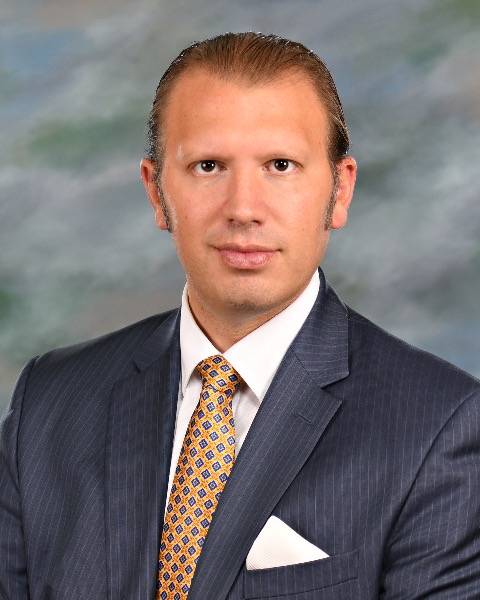Spine
Quantifying the Impact of Spinal Shape: Incorporating Roussouly Criteria into Novel Alignment Schemata Increases Probability of Optimal Radiographic Alignment in Adult Spinal Deformity Surgery

Peter G. Passias, MD
Professor
Duke University
Duke University Heath System
New Canaan, CT, US
Presenting Author(s)
Introduction: Harmonizing the various ideal alignment parameters defined in ASD surgery has recently become prominent. The incorporation of Roussouly typing into such schema has not been fully explored and may be necessary to prevent post-operative complications and improve patients’ quality of life.
Methods: Surgical ASD patients≥18years with BL and 2Y radiographic data included. Patients grouped by “theoretical” BL Roussouly type (Type I: PI < 45°, LL apex below L4; Type II: PI < 45°, LL apex above L4, L4-L5 space; Type III: 45°< PI < 60°; Type IV: PI>60°). Crosstabulation and univariate analysis determined distribution of BL GAP and sagittal age-adjusted score (SAAS) parameters within each group. Achieving optimal outcomes(OO)≥2 of the following: no PJK or PJF by 2Y, no major surgical complication or reoperation by 2Y, achieving MCIDr BCO in ODI. Conditional Inference Tree (CIT) analysis determined GAP and SAAS scores associated with matching target Roussouly typing by 6W.
Results: 244 included (61.38±13.66years, 77%female, 27.90±5.89kg/m2, CCI: 1.85±1.73). BL theoretical Roussouly classification: 51.4% Type II, 34.2% Type III, 14.4% Type IV, 0% Type I. GAP proportionality at BL was significantly different between groups, with increasing Roussouly classification significantly associated with increasing probability of categorization as GAP-Severely Disproportioned(p <.001). BL SAAS scores also differed by theoretical Roussouly types(p <.001), with Bonferroni-adjustment demonstrating significantly lower scores between Type II vs Type III or Type IV(both p<.001). CIT analysis revealed that for Type II, 6W GAP scores < 1 (p=.005) and 6W SAAS >0 (p <.001) were predictive of meeting OO. For Type III, 6W GAP scores ≤2 (p=.031) and 6W SAAS >3 (p <.001) were predictive of meeting OO. For Type IV, 6W GAP scores ≤4 (p <.001) also predicted meeting OO.
Conclusion : Our study demonstrates that adaptation of GAP and SAAS goals in alignment of patients’ spinal morphology may increase probability of achieving optimal outcomes post-operatively. In addition with the lower Roussouly types (Type I, II) associated with a greater need for adhering to stricter alignment by the GAP and SAAS parameters to achieve optimal outcomes and maintain spinal morphology.
Methods: Surgical ASD patients≥18years with BL and 2Y radiographic data included. Patients grouped by “theoretical” BL Roussouly type (Type I: PI < 45°, LL apex below L4; Type II: PI < 45°, LL apex above L4, L4-L5 space; Type III: 45°< PI < 60°; Type IV: PI>60°). Crosstabulation and univariate analysis determined distribution of BL GAP and sagittal age-adjusted score (SAAS) parameters within each group. Achieving optimal outcomes(OO)≥2 of the following: no PJK or PJF by 2Y, no major surgical complication or reoperation by 2Y, achieving MCIDr BCO in ODI. Conditional Inference Tree (CIT) analysis determined GAP and SAAS scores associated with matching target Roussouly typing by 6W.
Results: 244 included (61.38±13.66years, 77%female, 27.90±5.89kg/m2, CCI: 1.85±1.73). BL theoretical Roussouly classification: 51.4% Type II, 34.2% Type III, 14.4% Type IV, 0% Type I. GAP proportionality at BL was significantly different between groups, with increasing Roussouly classification significantly associated with increasing probability of categorization as GAP-Severely Disproportioned(p <.001). BL SAAS scores also differed by theoretical Roussouly types(p <.001), with Bonferroni-adjustment demonstrating significantly lower scores between Type II vs Type III or Type IV(both p<.001). CIT analysis revealed that for Type II, 6W GAP scores < 1 (p=.005) and 6W SAAS >0 (p <.001) were predictive of meeting OO. For Type III, 6W GAP scores ≤2 (p=.031) and 6W SAAS >3 (p <.001) were predictive of meeting OO. For Type IV, 6W GAP scores ≤4 (p <.001) also predicted meeting OO.
Conclusion : Our study demonstrates that adaptation of GAP and SAAS goals in alignment of patients’ spinal morphology may increase probability of achieving optimal outcomes post-operatively. In addition with the lower Roussouly types (Type I, II) associated with a greater need for adhering to stricter alignment by the GAP and SAAS parameters to achieve optimal outcomes and maintain spinal morphology.

.jpg)